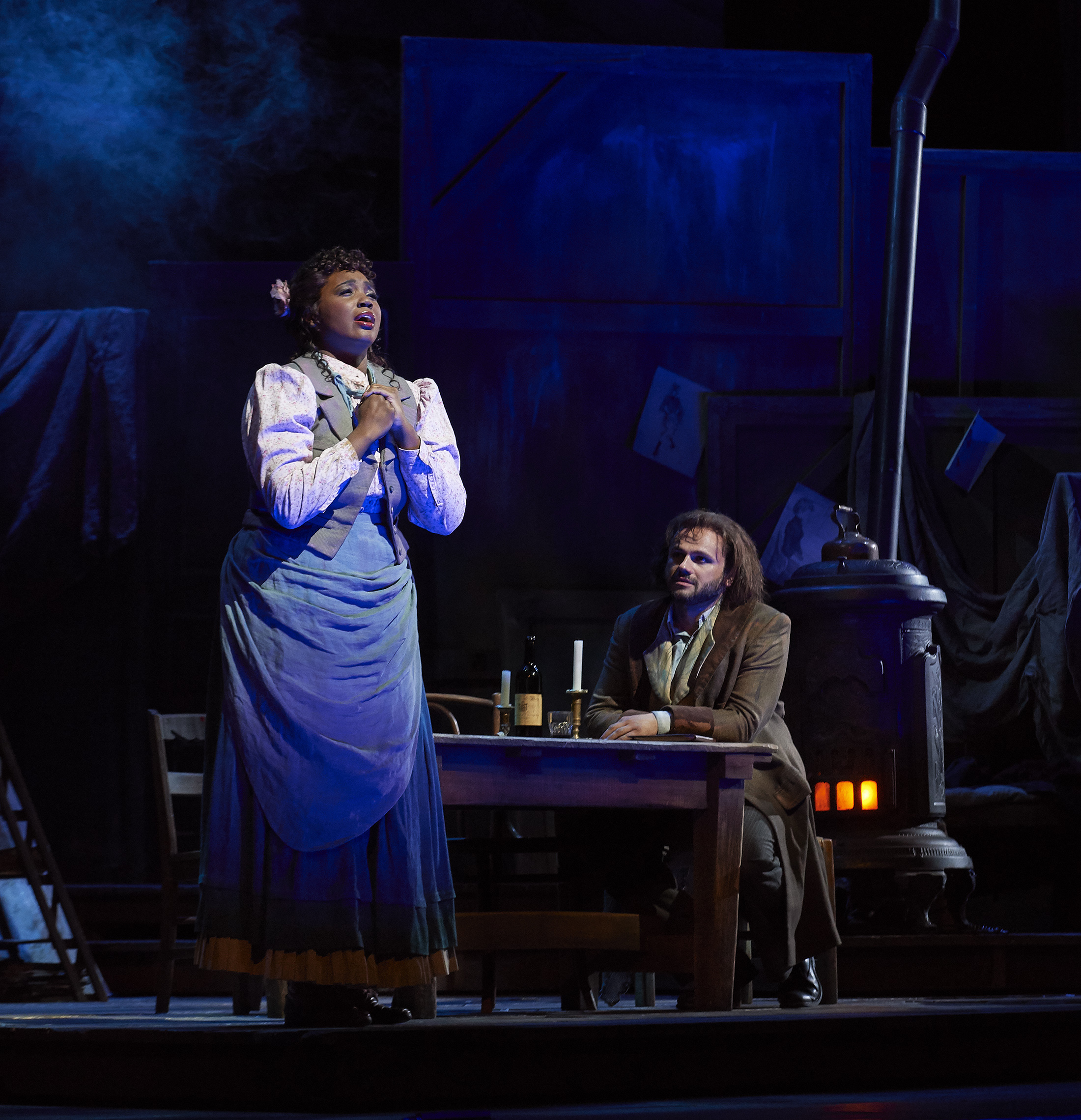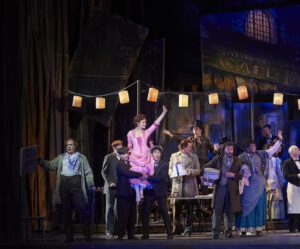*tap tap*
Is this thing on?
Hello everyone.
My name is Lydia Perović and I’m here to admit publicly that after years—nay, decades—of musical snobbery, I am coming out as a fan of Puccini’s La Bohème.
SUPPORT GROUP FOR THE LOVERS OF SENTIMENTAL MUSIC: Hi, Lydia!
This is not easy for me. I still can’t do most of Puccini’s opus, sorry Group.
SGFTLOSM: Whatever do you mean?
The emotional manipulation. He goes straight for the schmaltz. The overripe, swelling melodies! La Rondine is a microcosm of his approach. Two people are trying to have a conversation, but their vocal lines go WHOOOOOOAH. Calm down, you’re in a café. But it’s LA PASSIONEEEEEEEEEE. To which the tenor responds in kind. And every interaction is like that. Text almost doesn’t matter: singers could be doing vocalises, and what they sing would still move you. This is not a compliment! It’s like you’re being stuffed with cake long after you stopped being hungry. It’s cake and schmaltz, 24/7.
SGFTLOSM: *pensively* That could be a good franchise to open, actually…
Stay with me here. He also likes humiliating women in his operas.
SGFTLOSM: *everybody looks around or at their phones*
But… on La Bohème, I am with you. Sudden outbursts of emotion make all the sense in that opera. When Mimì and Rodolfo meet for the first time and get into the high emo arias right away, it somehow feels… accurate and tone-right. It’s the courting and coming together and really seeing each other, all distilled—from months and months of trial and error—into one effective exchange of arias.
It’s such a well-constructed opera. It unspools like a movie. It’s edited efficiently, without much explanatory monologuing. (Imagine if Wagner had used jump cuts in narration and trusted our power of deduction…)
SGFTLOSM: Bohème is also brilliant at multitasking.
OMG yes. The simultaneous double break-up scene is a hoot, as is the scene with Musetta getting rid of her older suitor while also flirting with Marcello one table over at a packed patio in a crowded Parisian street.
The opera is also knowing and frank about the place of money in human relations—and in making it as an artist. The four people clearly come from families that cannot support their artistic dreams with a trust fund. Women in particular are vulnerable, and all four principals understand that it’s better for the two women not to stay with the male bohemians but find wealthier suitors if they want food, shelter and clothes.
And interestingly, the opera doesn’t go for the fallen woman trope. It does not shame Musetta and Mimì for sleeping around and dating viscounts to survive (although Mimì is killed off by TB—it’s Puccini after all).
SGFTLOSM: What was this production at the COC like?
Perfectly respectable. The original director was John Caird, but the revival was by Katherine M. Carter. The set was assembled out of paintings that Marcello might have created himself, giving this vision of artistic life in Paris a makeshift character (set and costumes by David Farley).
In any case, La Bohème is pretty much director-proof. You can put the bohemians on a university campus, in a cancer hospital or on the moon, and the storyline will still work and you will still ugly-cry when Mimì arrives at “Ma quando vien lo sgelo” in “Sì, mi chiamano Mimì.”
SGFTLOSM: You really are a proper member of our club now!
And proudly. Let me tell you about the singers. Angel Blue had all the requisite beauty of tone and endless supply of breath as Mimì. She is a naturally charismatic stage performer, while most Mimìs are usually played as subdued, mousy creatures albeit equipped with powerhouse voices, so this is an interesting novelty. Tenor Atalla Ayan was the perfect Yin to Angel Blue’s Yang. Andriana Chuchman and Lucas Meachem were solid as Musetta and Marcello, and the smaller roles were all cast adequately. Paolo Carignani conducted the COC Orchestra, and as with his Tosca a few years back, this was a muscular, thunderous approach to Puccini, but this score can take it.
And now I must leave you.
SGFTLOSM: Where to?
There is this Renata Tebaldi-Jussi Björling La Bohème bootleg that I need to get back to. I’m curious to see how she navigates the “Ma quando vien lo sgelo” strait.
SGFTLOSM: Never approach Tebaldi’s Mimì unprepared! Here, take this box of tissues, you will need it. And see you at the next meeting. May the forti be with you.
Canadian Opera Company’s La Bohème runs through May 22 with an alternate cast on May 11 and 22.













